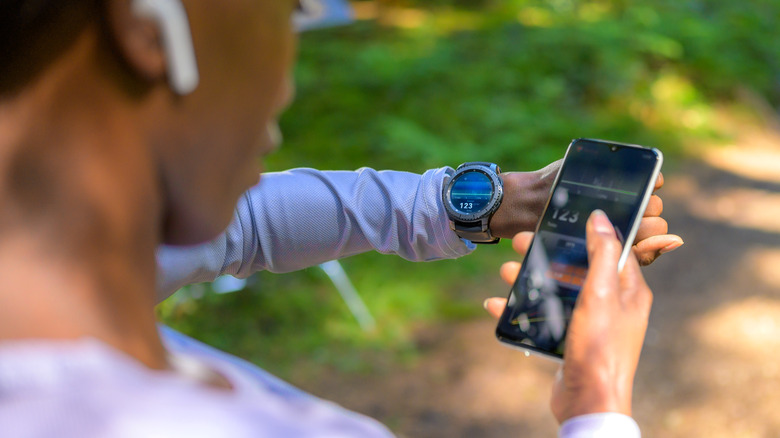So, 'Smart' Activewear Is A Thing Now - Here's What To Know
In the fitness world, there have always been devices that purport to know precisely how many calories you've burned in a workout, how many steps you've taken, or even suggest how many calories you need to cut in order for your body type to see results. From the old gym ellipticals and treadmills that used your age and weight to determine your BMI, to Apple Watches that track our steps and even the quality of our sleep, there is always new technology on the horizon to help us maximize our results.
Now, there are products on the market that may help you gain further fitness insights. "Smart" activewear includes yoga pants, sports bras, running shirts, and shorts that claim to provide helpful data about your workout, either through a device that you attach to your clothes or through the material of the clothing itself.
Fitt Insider co-founder Anthony Vennare explained the concept to Shape: "Depending on the product, it can be a simple device that you pop into your clothing or integrated fabric that can track biometric data, show muscle engagement, detect otherwise-unnoticed injuries, and even provide guidance on movement through vibrations." These items can do everything from sending your biometric data to your smartphone, to correcting your technique, managing your music playlist, and even monitoring your sleeping quality and patterns, per MakeUseOf.
As you might have guessed, smart activewear is significantly more expensive than your average gym outfit. But are the results worth it?
Smart activewear is pretty expensive
Writing for tech site Engadget, reviewer Mat Smith tried out a smart shirt made by U.K. company Prevayl, which hopes to sell in the U.S. soon. His tightly-fitting shirt claimed to contain an electrocardiogram with four times the accuracy of a heart rate monitor, in addition to tracking body temperature, breathing, recovery rate, caloric burn, and more. It sent his data to a smartphone app (of course!) where it color-coded the effort he put into his workout, and even displayed his cardiogram!
It certainly sounds pretty cool, and like a great gift for the tech nerd in your life. But is smart activewear truly cost effective? Smith reported that the Prevayl system (which includes the app, a community forum, and the technology) costs a minimum of £120 ($160 USD), at the time of writing, for both the Smart Tank and the sensor. Meanwhile, the Smart Sports Bra is £65 ($82 USD), and the Smart Shirt is £70 ($89 USD).
While tech-enthusiasts and gym junkies may want to splurge on smart activewear, not every critic is convinced that the high price tag is worth it.
Smart activewear has accuracy and efficacy concerns
In addition to disappointment over the hefty price of smart activewear, there are concerns over the accuracy of these products. University at Buffalo professor of biomedical engineering Albert Titus spoke with CNET, saying that there isn't much that activewear can offer, at the moment, that our smartwatches or smartphones can't already do for us.
"On my watch, I can measure my pulse rate," he explained. "If I put on a shirt and it measures my pulse rate, why wouldn't I just wear a watch?" He also pointed out that the sensors "need to be in contact with the body in a way that is stable and reliable. And that usually means something that is tight-fitting close to skin." So if your smart activewear isn't tight on your body because it has stretched over time, or due to a style preference (men traditionally wear looser fitting workout shirts), the gathered data will not be as effective.
Despite these setbacks, Titus ultimately feels that smart activewear has "some potential" to surpass the ubiquity of smartwatches or smartphones but the industry is "not necessarily there yet." So while smart activewear may be the future of fitness gear, it doesn't look like it's going to take over the smart accessories we already have any time soon.


